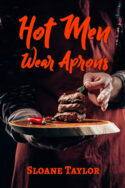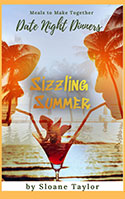Who Thought That?
January 20, 2006 | It's All About Writing
As promised today we’ll discuss the topic POINT OF VIEW, commonly referred to as POV, and what it means to your novel. Following are the frequently asked questions by new writers;
1. What is Point of View?
POV is the thoughts and five senses of a specific character. You can not write POV effectively if you don’t know your character. Hence the characterization sheets you did in Week One.
It also allows your reader to “get inside David’s head”. What the hell is that, you ask? Simple. For your reader to love (not like but love) your book and recommend it to others, they must feel a rapport with David. It can not be accomplished if you haven’t given David enough time to develop.
2. Why use a specific POV?
Doesn’t it seem you should be able to just tell your story and get on with it? Not have to worry about all this technical stuff? Here’s a heads up; readers today are savvy. They want to like your main characters, especially in a romance. They want to relate to your hero and heroine. Unless you show your characters to be living, breathing, beings, the reader will never be happy. For that fact, neither will a publisher, therefore no sale, therefore no readers. It’s your decision but if you want to sell you must master POV.
3. How do you determine who should have a POV in a specific scene?
This isn’t always easy to decide. You, the author, must choose whose POV you need to use at that precise moment in your story. Consider these points;
• Who has the most to gain in this particular scene?
• Who has the most to lose?
• Which character’s part of the story needs to move forward the most at this exact moment?
• Which character’s POV will be the most interesting to the story at this exact moment?
4. Length of POV?
As long as the scene warrants. Most, if not all editors, want to read a minimum of 500 words in a specific POV which is easy to accomplish in your edits.
5. What is Head Hopping?
One of my greatest, and funniest, mistakes when I first started writing was head hopping. It means each paragraph is in a different POV and very confusing to the reader. A good author controls this rotten phenomenon while writing. I correct it in my edits.
6. What POV can’t be;
It can not include lines such as;
The car roared to life and he peeled out onto the street, cutting off a delivery truck. David never
noticed the driver when he flipped him off.
A very dramatic way to write but if David can’t see the driver flip him off then it never happened or the scene is in someone else’s POV. Your POV character sees everything that occurs around him/her.
The POV character can not see the color of their own eyes or hair at that moment. Therefore she can’t think, “My green eyes have brightened at the sight of David.”
The POV character doesn’t think of their own name or the full name of their parents or friends.
Other characters thoughts cannot jump into the middle of your hero’s POV.
Consider how you think when you’re watching or speaking with someone. What is it you see, do, and think? It’s the same actions and reactions your POV character will have.
7. Correcting POV
We have finally hit on something easy. When I edit the first draft I mark the margin in whose POV the paragraph was written. Should I see, and believe me I do, a mix of POV’s in one scene I go back and rework asking myself the questions from above number three.
Many times it only requires changing a few words. See the examples below;
• Original which should be in David’s POV
David stared into Gwen’s eyes searching for an answer. Beyond this incredible desire to be in her, he
realized he really liked her. She was kind, funny, and intelligent. Her ability to discuss any topic
sensibly excited his brain, perhaps even more so than her scent and soft eyes sent his body into a
sex-driven frenzy.
• Corrected which now is in David’s POV
He stared into her eyes searching for an answer. Beyond this incredible desire to be in her, he realized
he really liked her. She was kind, funny, and intelligent. Her ability to discuss any topic sensibly
excited his brain, perhaps even more so than her scent and soft eyes sent his body into a sex-driven
frenzy.
• Original which should be in David’s POV
David watched through narrowed eyes, his mouth grim. A blue vein throbbed in his forehead and his
hands gripped his glass like a vice. Unmistakably, he was pissed watching Gwen enjoy herself with
another man.
• Corrected which now is in David’s POV
She could see David watching her through narrowed eyes, his mouth grim. A blue vein throbbed in his
forehead and his hands gripped his glass like a vice. Unmistakably, she thought, he was pissed
watching Gwen enjoy herself with another man.
Just a few word changes will bring the paragraph into the right POV and maintains the continuity of the scene.
Your work is to correct your entire manuscript to be sure you have all the correct POV’s within your scenes. If you have any questions, please insert them in the comment box and I’ll be happy to help you.
Monday we’ll work on punctuation. Until then have a great week-end,
Happy writing!
Sloane





Thanks for this, Sloane. I was recently working on an edit and came across a fabulous line I’d written that was in the other character’s POV. I had to cut it, because there was no way to turn it around to the other POV. Boy, did that hurt!!!
On January 20th, 2006 at 1:06 pmDon’t cut it completely!!!! Move it to a scene of the correct character and have them reflect. Use it as a “I should have said” kind of thing. You should be able to do it smoothly.
On January 20th, 2006 at 1:09 pmAh, Beth answered pov questions this month on my site, also. Boy, together you guys are great. I love your examples. POV was kinda hard, until I started putting myself in the character’s head, to see, feel and experience as them. Thanks, I’ll be waiting for punctuation on Monday. Oh Joy!
On January 21st, 2006 at 2:20 pmGreat series, Sloane. I’m enjoying it enormously.
On January 22nd, 2006 at 11:42 amThanks, Yasmine and Maya, for the boost. But in both your cases it’s like preaching to the choir.
It’s scary sharing all the info Beth and others have taught me. I sure don’t want me to think I’m being this ‘know-it-all’. The truth is, at least to me, writing is a logical process. Thank you Hercule Poirot for teaching me to use my little gray cells.
On January 22nd, 2006 at 3:38 pmI love pov. I think that makes me some kind of mutant. I used to head-hop. A lot. I read my old stuff and I cringe. I had to become a purist – one pov per scene. I once read a book where there were 13 pov. 13. The story lost me and so I began to count point of view changes. It was startling to discoverthis especially since I had just listened to a RWA tape with her talking about POV and how she never does this. Um…hello.
The one thing I love about pov is that I learn so much about my characters, whether I use that info or not. POV allows me to hear their voices in my head. When I hit that point in my writing, I know I’ve immersed myself in the story. Hence me loving pov.
This stuff is great, Sloane.
On January 23rd, 2006 at 11:51 amDiva, it’s no wonder you write such compelling stories. You’ve hit the motherlode behind the author. Congratulations!
On January 23rd, 2006 at 12:59 pm